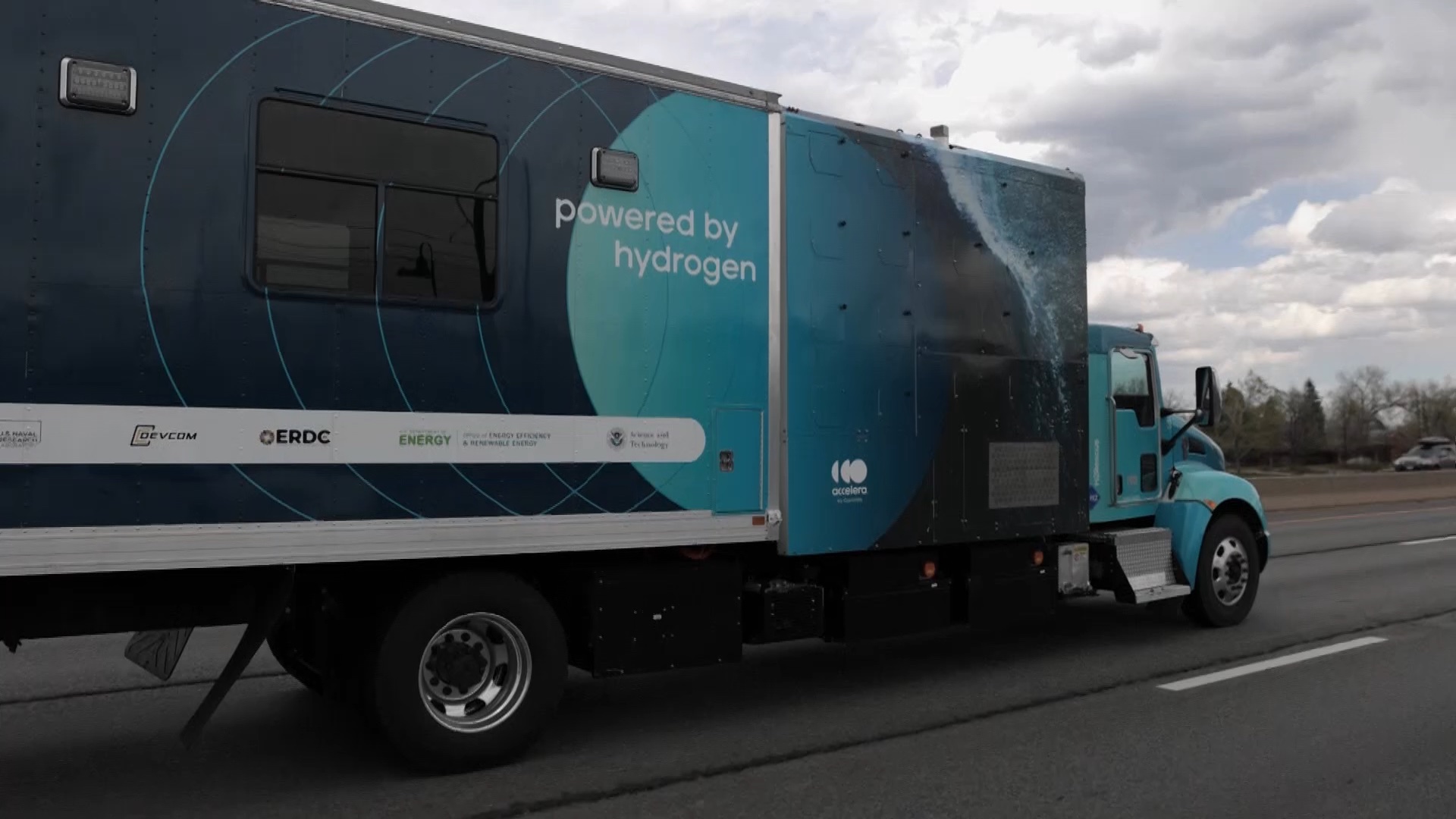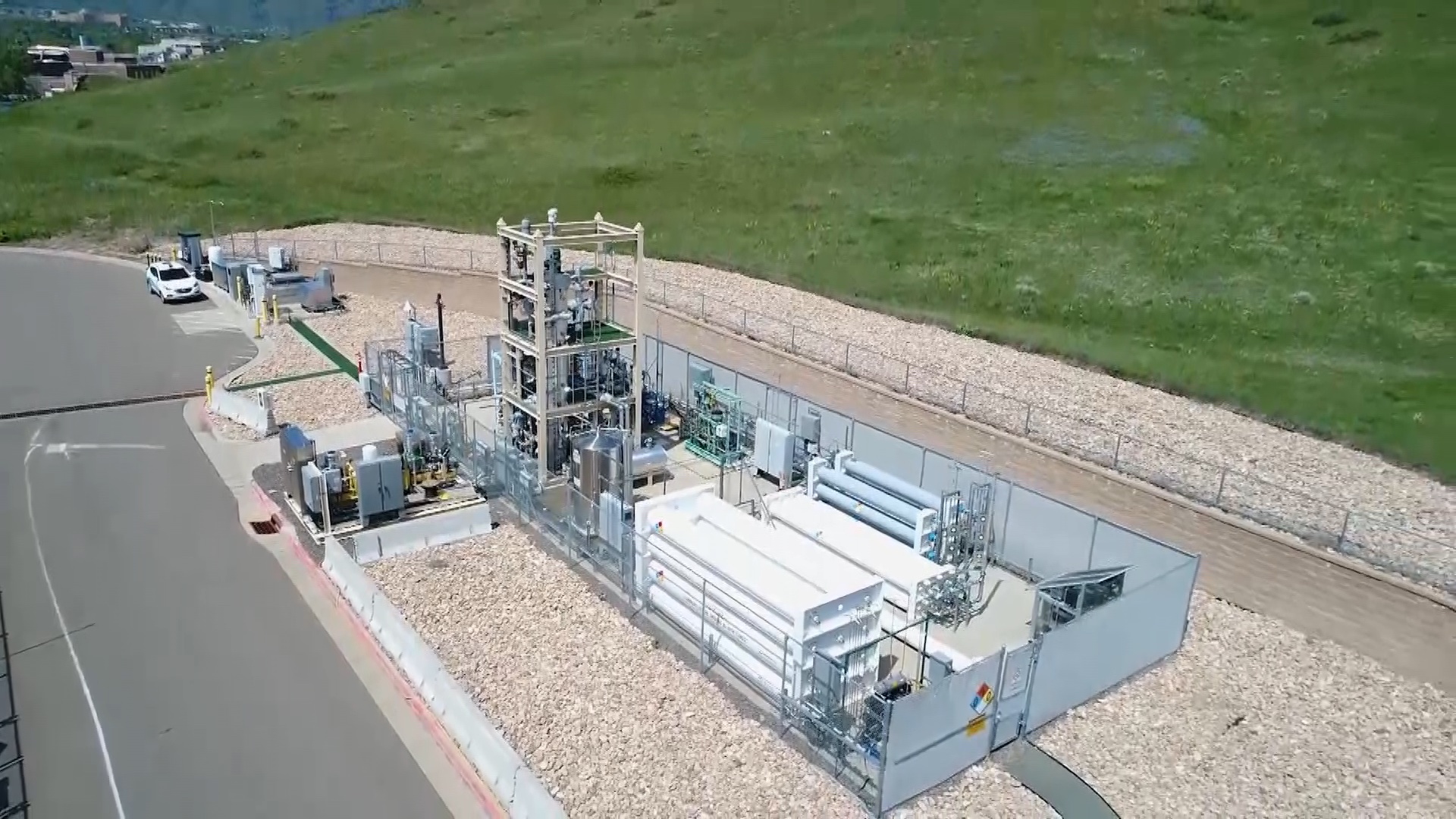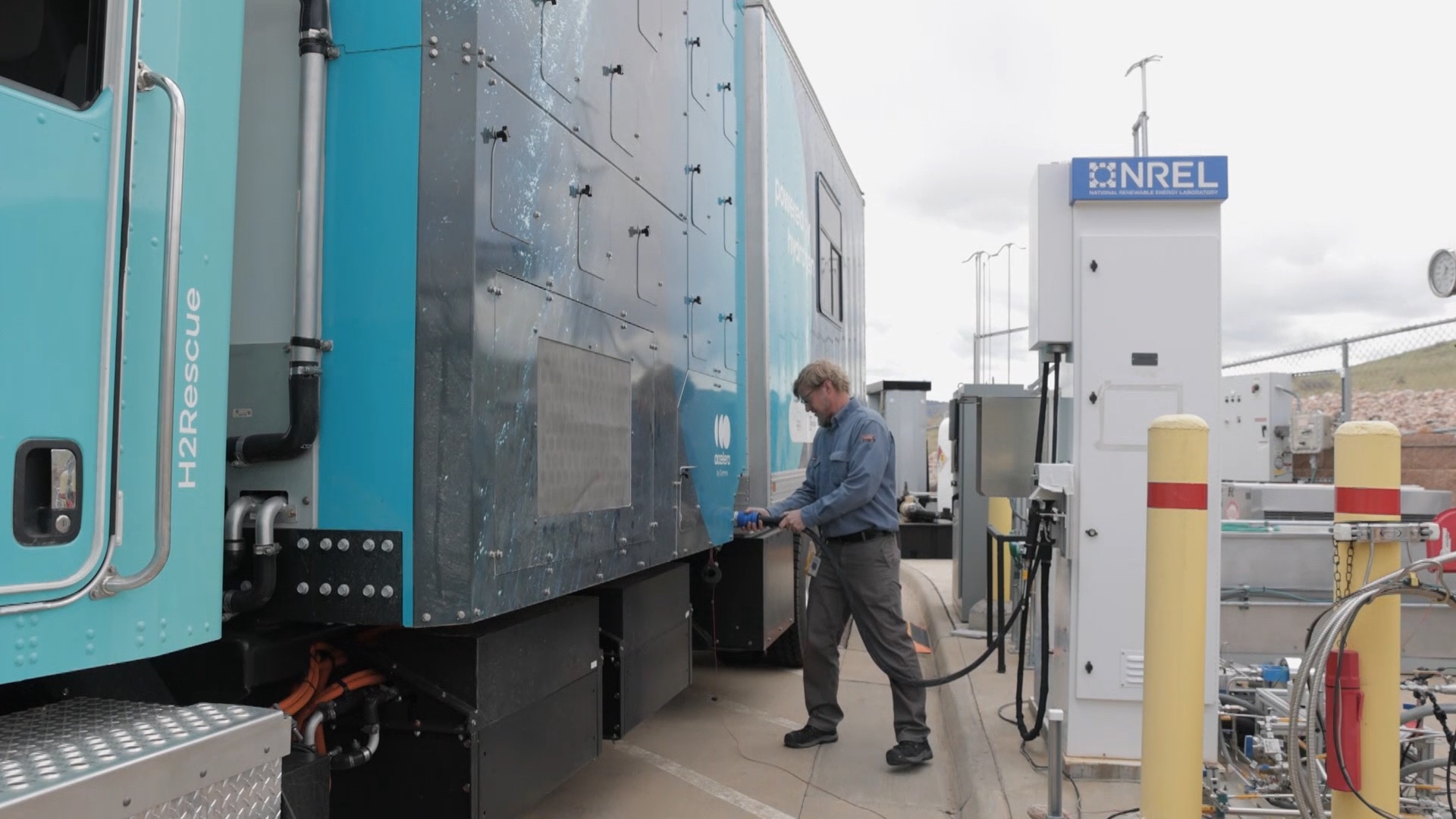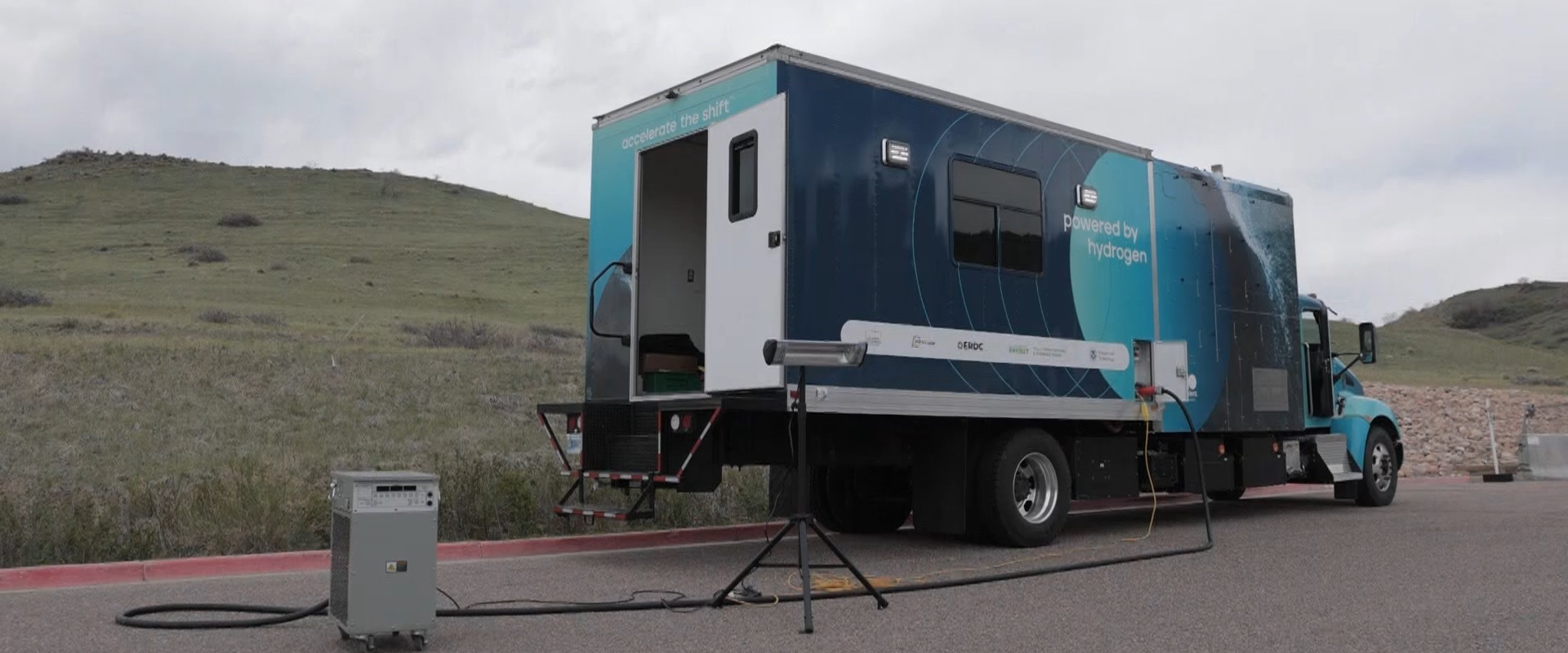H2 the Rescue
How Hydrogen Can Help First Responders

Mounting an effective response to natural disasters or emergency situations often comes down to having the right vehicles and equipment on standby. This week we look at a prototype rescue truck that relies on clean power technology to let first responders hit the ground running.
Efficient use of time and resources in the first hours after a hurricane, flood, fire, or winter storm, especially in remote areas, is critical for setting up a successful recovery operation.
H2@Rescue is a hydrogen fuel cell/battery hybrid truck that can mobilize to disaster sites within a 180-mile range, and then provide power, heating and cooling, and even create water on-site for up to 72 hours before refueling.
The project is a collaboration between several federal agencies, including the Departments of Energy and Homeland Security, the Army Corps of Engineers and private sector partners. We caught up with the team at Colorado’s National Renewable Energy Lab, where functionality testing was underway.

NICHOLAS JOSEFIK: “The H2@Rescue gives us an opportunity to bring an emergency vehicle into a situation where there is no power or water, and get some eyes on the situation. We can immediately have a command center, we can immediately be producing power– 25 kilowatts worth of power– and we can be generating water on site that could be used.”
H2@Rescue is a Class 7 heavy duty truck weighing approximately 33,000 pounds.The box body is climate controlled and can act as a mobile command center or warming/cooling shelter during an emergency. The truck carries 176 kilograms of hydrogen onboard, in high-pressure tanks. Hydrogen fuel has an energy density about three times that of gas or diesel, and the electric drivetrain used in this truck is more efficient than a similar internal combustion engine.
Conversion of the Kenworth chassis from diesel to hydrogen power was spearheaded by Accelera by Cummins, a new subsidiary of the traditionally diesel-driven engine maker, that will focus on zero-emissions power solutions for the future.
PRATEEK VAISH: “It has a fuel cell, which produces 90 kilowatts at max. There’s a high-voltage battery, which is 155 kilowatt-hours, and there is a traction motor, which is 250. So, in a nutshell, how this vehicle operates is: The fuel cell charges the battery, and the battery provides power to the traction– traction motor. But if the battery is low on charge, the fuel cell can also provide power to the traction motor.”

The transport and fueling infrastructure for hydrogen still lags behind conventional fuels in terms of cost and number of locations due to the need for pressurized tanks and other factors, but that gap could be closed in the future, since hydrogen can be produced and stored locally, potentially right at a fueling site.
Accelera is already a global leader in fuel cell applications with more than 2,000 fuel cells and 600 electrolyzers – the machines that separate hydrogen from water — already in use.
Lessons learned here will help them develop zero-emission power solutions for other vocational vehicles, like electric utility trucks, transit buses, delivery vehicles and long-haul trucks.
PRATEEK VAISH: “And we’re doing a lot of work towards destination zero, which is we’re trying to decarbonize the whole Cummins portfolio by 2050, so this is a great step in that direction.”
H2@Rescue passed the NREL testing with flying colors, proving that hydrogen power can fulfill the critical needs of first responders in these extraordinary situations, and showing one pathway to a zero-emission future for vehicles of all sizes.






